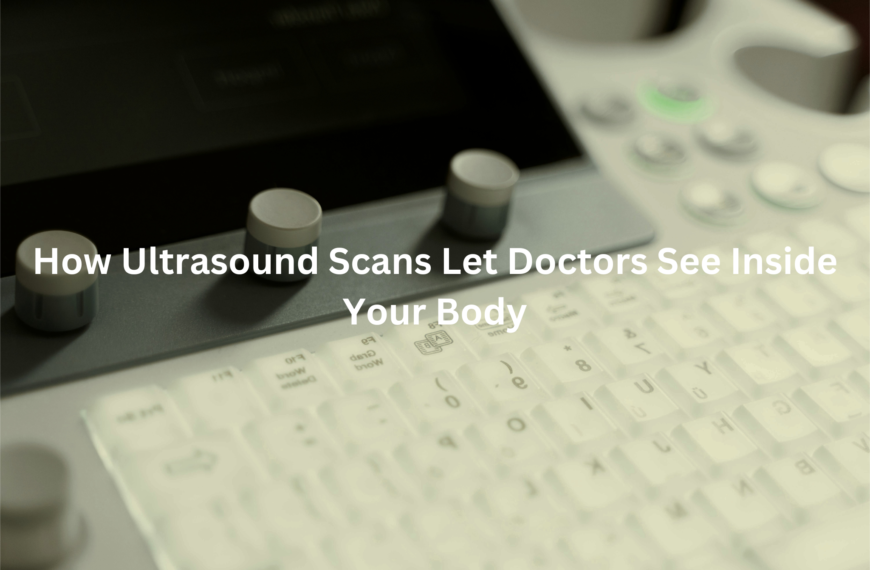Unsure whether to use DXA or MRI for body composition analysis? This guide breaks down their accuracy, benefits, and key differences.
DXA (Dual-energy X-ray Absorptiometry) and MRI (Magnetic Resonance Imaging) are two common methods for analysing body composition, but they serve different purposes.
DXA is widely used for measuring bone mineral density and estimating fat mass, while MRI offers a detailed view of muscle, fat, and water distribution. Understanding their differences can help you choose the most suitable method for your health or research needs.
Key Takeaways
- DXA is ideal for bone health assessment and large-scale fat analysis, offering a fast and cost-effective solution.
- MRI delivers highly precise body composition data, making it the better choice for detailed muscle and fat analysis.
- DXA may overestimate lean mass, while MRI provides a more accurate measure of muscle and fat changes over time.
DXA vs MRI: Key Differences
DXA (Dual-energy X-ray Absorptiometry) and MRI (Magnetic Resonance Imaging) both show what’s happening inside the body, but they do it in very different ways.
DXA uses low-dose X-rays to measure bone mineral density (BMD), lean mass, and fat mass. It’s widely used in clinics and research because it’s quick, relatively affordable, and easy to access. The scan takes just a few minutes, making it ideal for large-scale studies and routine health checks.
MRI, on the other hand, builds detailed images using magnetic fields and radio waves—no radiation involved. It provides an incredibly precise look at fat, muscle, and organs, making it the gold standard for body composition analysis. But it’s costly and not as widely available. (1)
Key points:
- DXA: Fast, affordable, good for tracking BMD and fat distribution.
- MRI: Highly detailed, best for precise muscle and fat analysis but expensive.
- Main difference? DXA is widely available; MRI isn’t.
Measurement Accuracy & Agreement
Credits: Peter Attia MD
Both DXA and MRI are widely used in body composition research, but their results don’t always align.
DXA Strengths & Limitations
DXA is the go-to method for checking bone health. It’s the gold standard for diagnosing osteoporosis and predicting fracture risk. A full-body scan is quick—done in about 5–10 minutes.
Key points:
- Bone health: Best for measuring bone density.
- Speed: Quick and practical.
- Fat measurement: Overestimates lean mass, underestimates visceral fat, especially in people with higher body fat.
MRI Strengths & Limitations
MRI is the top choice for detailed fat and muscle analysis. It measures visceral fat, subcutaneous fat, and muscle mass loss with high precision—without radiation. But it’s pricey and takes longer.
Key points:
- No radiation: Safer than X-rays.
- Accuracy: Best for fat and muscle measurement.
- Cost & time: Expensive and takes 30–60 minutes per scan.
For bone density, go with DXA. For detailed body composition, MRI wins.
Clinical & Research Applications
DXA is a widely used tool in medicine and research, valued for its speed and affordability.
Common uses:
- Bone health: Diagnosing osteoporosis and assessing fracture risk.
- Body fat analysis: Estimating total body fat percentage.
- Research: Ideal for large-scale health studies.
MRI Is Used In:
MRI is a valuable tool in research, providing detailed insights into body composition and metabolic health.
Key uses:
- Metabolic diseases: Researching diabetes and obesity.
- Ageing & illness: Monitoring muscle loss.
- Fat distribution: Analysing visceral fat and muscle changes.
Fat & Lean Mass Measurement Comparisons
DXA vs MRI for Fat Mass
DXA and MRI both measure body fat, but they don’t always line up. DXA can overestimate visceral fat, especially in people with higher levels. MRI, on the other hand, gives a more precise breakdown.
Key differences:
- DXA: Fast but may overestimate visceral fat.
- MRI: Accurately separates visceral and subcutaneous fat.
DXA vs MRI for Lean Mass
DXA and MRI both measure body composition, but their accuracy varies. DXA can overestimate lean mass by 1–2 kg, as it mistakes some water and soft tissue for muscle. MRI, on the other hand, offers a more precise assessment.
Key points:
- DXA: Useful for general fat percentage estimates.
- MRI: More accurate for tracking muscle loss, especially in older adults and those with muscle-wasting conditions. (2)
Statistical Considerations & Study Design
Researchers comparing DXA and MRI don’t just look at raw numbers—they analyse correlation coefficients, standard deviations, and limits of agreement.
Types of Studies Comparing DXA & MRI
DXA and MRI both help measure body composition, but their accuracy depends on how they’re used. Cross-sectional studies give a snapshot of population trends, while longitudinal studies are better for tracking changes over time.
Key points:
- Cross-sectional: Useful for broad population insights.
- Longitudinal: More accurate for tracking body composition changes.
For example, a study using MRI found a 4–5% drop in muscle mass over time—something DXA completely missed or even showed as an increase.
Study Population & Sample Size
DXA and MRI tend to match up in smaller studies, but larger studies highlight DXA’s inaccuracies—especially for lean mass and visceral fat.
Key points:
- Smaller studies (50–100 participants): DXA and MRI show strong agreement.
- Larger studies (1000+ participants): DXA becomes less reliable, particularly for lean mass and visceral fat.
Cost, Accessibility & Practicality
DXA is the more affordable and accessible option, making it a practical choice for most people. On the other hand, MRI provides superior detail but comes with a much higher price tag.
Key comparisons:
- Cost: DXA ($50–$200) vs MRI ($500–$3000)
- Scan time: DXA (5–10 mins) vs MRI (30–60 mins)
- Availability: DXA is widely available in clinics; MRI is mostly found in hospitals.
- Radiation: DXA uses low-dose X-rays, while MRI doesn’t use radiation.
Choosing the Right Method
Choosing between DXA and MRI depends on what you’re looking for. DXA is ideal for assessing bone health, while MRI provides a more detailed look at body composition.
Best for:
- Bone health: DXA is the gold standard.
- Tracking fat & muscle: MRI offers greater precision.
- Large studies: DXA is quicker and more affordable.
Emerging Trends & Future Outlook
Technology is evolving, and so are these imaging methods.
AI & Imaging Technology
AI advancements are enhancing DXA’s accuracy, particularly in estimating lean mass. Meanwhile, MRI scans are becoming quicker and more affordable, though they’re still not widely accessible.
Key developments:
- DXA: AI is refining fat and muscle analysis.
- MRI: Costs are decreasing, but availability remains limited.
Hybrid Approaches
Some researchers are combining DXA and MRI to improve accuracy. For example:
- Using DXA for bone density & fat mass
- Using MRI for detailed muscle loss tracking
New Clinical Guidelines
Experts are refining how fat mass and lean tissue are measured, giving patients more accurate health insights. Advances in technology are improving precision, leading to better diagnoses and treatment plans.
Key advancements:
- Enhanced fat and muscle analysis with AI and improved imaging.
- More reliable diagnostic tools for personalised health assessments.
Conclusion
If you’re after a quick health check, DXA is a solid choice. But for athletes, bodybuilders, or anyone tracking precise body changes, MRI provides a more accurate picture.
Choosing the right scan:
- DXA – Affordable, fast, and widely available.
- MRI – More precise but costly and less accessible.
For most, it’s about balancing cost, accuracy, and convenience. If MRI fits your budget, go for it. If not, DXA still offers useful insights—just interpret the results carefully.
FAQ
What is dual-energy X-ray absorptiometry (DXA) used for?
DXA, also known as dual energy X-ray absorptiometry, is a common body composition assessment method. It measures bone mineral density, lean tissue, and fat mass measurement. It is widely used for the assessment of bone density and assessment of fracture risk, particularly in postmenopausal women and individuals with a high presence of osteoporosis.
How does magnetic resonance imaging (MRI) compare to DXA for fat mass measurement?
MRI provides a detailed analysis of adipose tissue volumes and adipose tissue mass, giving a more precise look at fat tissues in different areas of the body, such as the trunk region. While DXA shows a moderate correlation with MRI in fat measurements, MRI is often considered the gold standard due to its accuracy in assessing skeletal muscle size and distinguishing between subcutaneous and visceral fat.
What do previous studies say about DXA vs MRI accuracy?
Method comparison studies have found a strong correlation between DXA and MRI, but there are limits of agreement. Some statistical analysis suggests that DXA may overestimate lean tissue while underestimating fat measurements. Longitudinal studies tracking human body composition over time indicate that MRI detects smaller changes in skeletal muscle mass and fat tissues more accurately.
Are there any negative correlations between DXA and MRI results?
While DXA and MRI often show a positive correlation, certain direct comparisons have found a negative correlation in some body composition measures. For example, DXA may slightly overestimate bone mineral content, particularly in areas like the lumbar vertebrae and L5 vertebrae, whereas MRI can provide more detailed lumbar spine signal intensity readings.
How does sample size impact the accuracy of DXA and MRI studies?
The reliability of any study population depends on having a representative sample. Cross-sectional studies with small sample sizes may show variability in correlation coefficients between DXA and MRI, while longitudinal studies tend to provide more consistent insights. Statistical methods like cross-sectional analysis and statistical significance testing help ensure that findings are accurate.
References
- https://www.medrxiv.org/content/10.1101/2024.12.12.24318943v1.full
- https://qims.amegroups.org/article/view/41830/html




